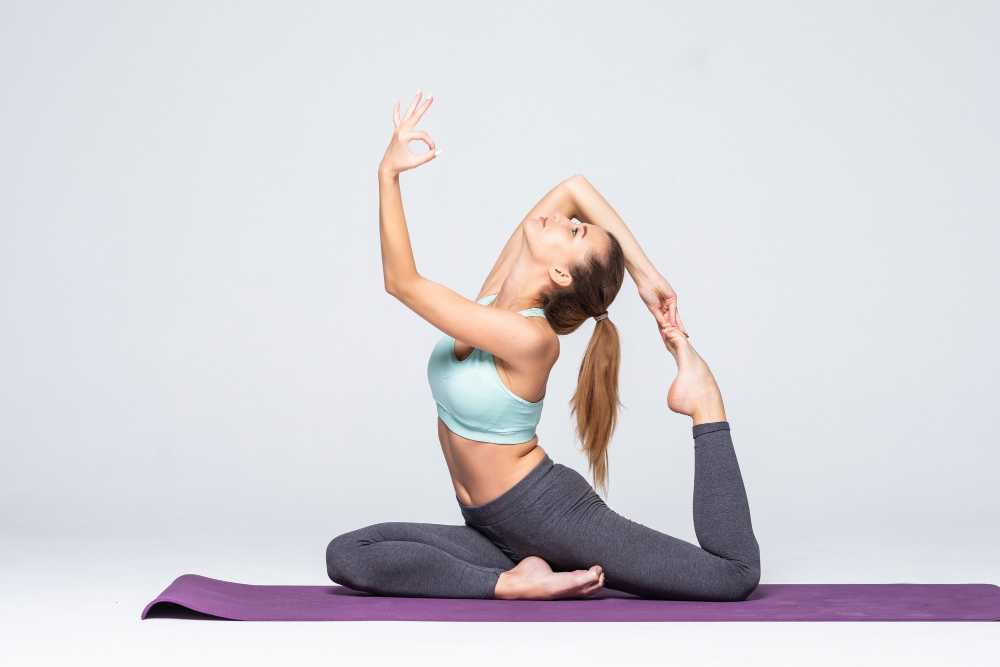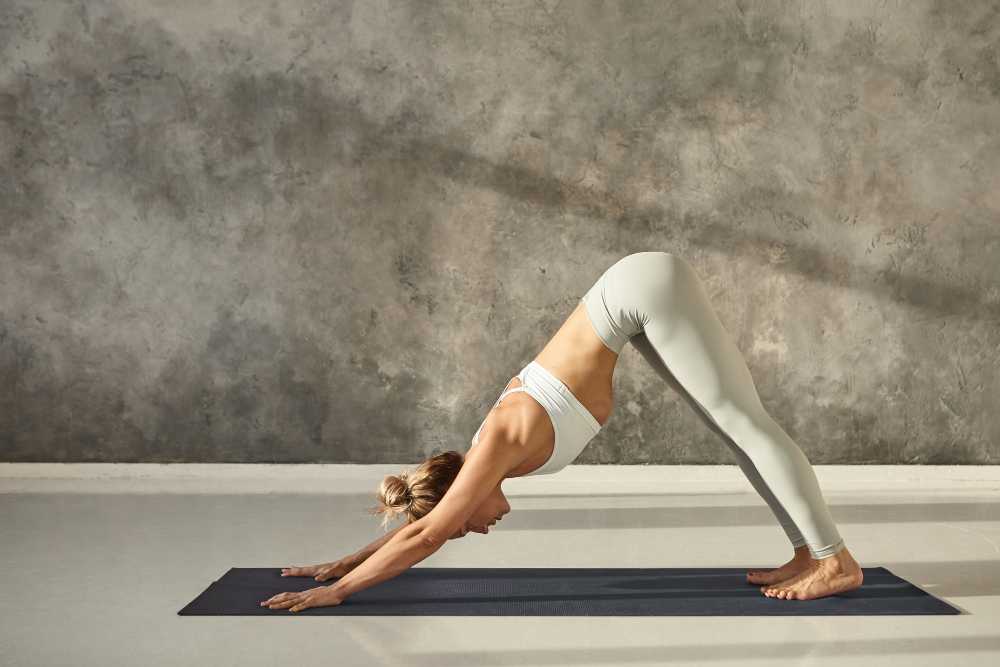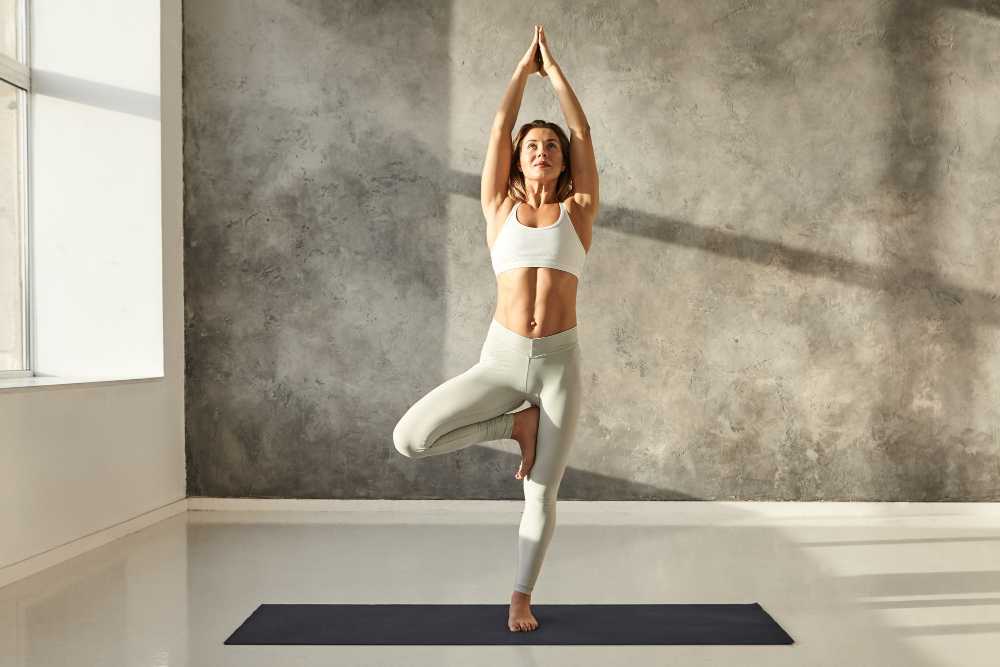
Seeking a holistic boost for your well-being? The title “Supercharge Your Well Being With Yoga” hints at the life-changing potential this ancient discipline holds. Welcome to the realm of yoga, a transformative practice that transcends physical exercise. In our fast-paced world, where stress and chaos often reign supreme, yoga emerges as a sanctuary.
It’s not just about striking poses; it’s a path to harmonizing your mind, body, and soul. Think of yoga as a way to recalibrate amidst life’s turbulence, fostering mental clarity, physical strength, and emotional balance. Embrace yoga; it might be the key to unlocking your optimal well-being.
Understanding Yoga: Beyond Physical Poses
Yoga is more than just striking poses on a mat. It’s a wholesome philosophy, combining breath control, meditation, and postures to create harmony within yourself. This age-old practice aims to unite your body, mind, and spirit, offering a path towards mental clarity and physical fitness.
Yoga’s Mental Benefits: Finding Inner Peace
Our lives are often filled with stress and anxiety. Yoga acts as a soothing balm in this hectic world. Breathing exercises and meditation calm the mind and help you see through the fog of stress. By practising mindfulness, it gives you the tools to handle daily challenges with grace and tranquillity.
Physical Invigoration Through Yoga Practice
Flexibility, strength, and balance are essential for a healthy body. Yoga delivers on all fronts. Those poses you see aren’t just for show; they stretch and tone muscles, improve joint mobility, and enhance posture. Whether you’re a beginner or a seasoned practitioner, yoga can adapt to your fitness level and goals.
And the best part? It leaves you feeling rejuvenated and full of energy.
Emotional Well-Being and Yoga
Emotions play a huge role in our lives, and yoga is a haven to understand and manage them. By fostering self-awareness and reflection, yoga helps build emotional resilience. It nudges you towards a more positive outlook, lifting feelings of depression and anxiety while nurturing gratitude and contentment.
Making Yoga a Daily Ritual for Wellness
The beauty of yoga lies in its simplicity. You don’t need a major life overhaul. Start small—a few minutes each day for basic poses or integrating breathing exercises into your morning routine. Gradually increase the duration as you get more comfortable.
The secret sauce? Consistency. Even a few minutes daily can work wonders for your well-being.
The Top 5 Yoga Poses for Beginners
1. Mountain Pose (Tadasana)

Start your yoga journey by standing tall like a majestic mountain. This foundational pose improves posture, strengthens thighs and ankles, and cultivates a sense of grounding and stability.
How To Do Mountain Pose (Tadasana):
- Stand tall with your feet together or slightly apart.
- Keep your arms relaxed by your sides, palms facing forward.
- Engage your thigh muscles, lift your kneecaps, and gently tuck your tailbone.
- Lengthen your spine and relax your shoulders, keeping your chin parallel to the floor.
- Breathe deeply, grounding your feet into the floor like the roots of a tree. Hold for 30 seconds to 1 minute.
2. Downward-Facing Dog (Adho Mukha Svanasana)

Transition into this pose that resembles an inverted “V.” It stretches the entire body, lengthens the spine, relieves tension, and revitalizes both body and mind.
How To Do Downward-Facing Dog (Adho Mukha Svanasana):
- Start on your hands and knees, aligning your wrists slightly ahead of your shoulders and your knees below your hips.
- Tuck your toes, lift your hips toward the ceiling, and straighten your legs.
- Spread your fingers wide, pressing your palms into the mat, and relax your head between your arms.
- Keep your heels reaching towards the floor without forcing them down.
- Lengthen your spine and engage your core muscles. Hold for 30 seconds to 1 minute.
3. Warrior (Virabhadrasana)

Channel your inner warrior with this pose. It strengthens the legs and opens the chest, shoulders, and hips while instilling confidence and determination.
How To Do Warrior (Virabhadrasana ):
- Begin in Mountain Pose, then step your left foot back, keeping your feet about 3 to 4 feet apart.
- Turn your left foot slightly outward and bend your right knee to a 90-degree angle, aligning it over your ankle.
- Square your hips toward the front of the mat, extending your arms upward, palms facing each other or touching.
- Gaze forward or upward, keeping your shoulders relaxed. Hold for 30 seconds to 1 minute, then switch sides.
4. Child’s Pose (Balasana)

Embrace this gentle resting pose that releases tension in the back, shoulders, and chest. It’s a sanctuary of relaxation, fostering a sense of calm and tranquillity.
How To Do Child’s Pose (Balasana):
- Start on your hands and knees, then sit back on your heels, keeping your knees wide apart or close together.
- Extend your arms forward, lowering your forehead to the mat, or, if comfortable, place your arms by your sides.
- Relax your entire body, focusing on deep breaths and expanding your ribcage. Hold for 1 to 3 minutes.
5. Tree Pose (Vrikshasana)

Stand firm like a tree in this balancing pose. It enhances focus and stability and strengthens ankles and calves while promoting a peaceful state of mind.
How To Do Tree Pose (Vrikshasana):
- Begin in Mountain Pose and shift your weight onto your left foot.
- Bend your right knee and place your right foot on your inner left thigh or calf, avoiding the knee joint.
- Press your foot into your thigh and bring your palms together at your chest, or extend your arms overhead.
- Find a steady focal point to assist with balance and hold for 30 seconds to 1 minute, then switch sides.
Remember, for each pose, to focus on steady breathing and listen to your body. It’s okay if you can’t hold the poses for too long initially; with consistent practice, your flexibility and strength will improve. If you have any specific health concerns or injuries, consult a yoga instructor or healthcare professional before attempting these poses.
Summary
Yoga isn’t just about striking poses; it’s a journey to a more balanced and fulfilled life. It’s a lifestyle that nourishes your mind, body, and spirit, paving the way for mental clarity, physical vigour, and emotional stability.
FAQs About Supercharge Your Well Being With Yoga
Is yoga suitable for beginners?
Absolutely! Yoga caters to everyone, including beginners. There are classes specifically designed for newcomers.
Can yoga aid in weight loss?
While it’s not a direct weight-loss tool, yoga encourages mindfulness, which complements a healthy lifestyle and aids in weight management.
How often should I practice yoga to see results?
Consistency is key. Aim for 3-4 sessions a week for noticeable improvements in flexibility, strength, and mental well-being.
Are there different types of yoga?
Yes, various styles like Hatha, Vinyasa, Ashtanga, and Bikram emphasize different aspects of the practice.
Can yoga alleviate back pain?
Yoga strengthens core muscles, improves posture, and enhances flexibility, which can help ease back pain.
What equipment do I need for yoga?
A yoga mat is a good start. As you progress, you might consider props like blocks or straps for support.
Is yoga a spiritual practice?
Yoga has spiritual roots, but it’s adaptable to personal beliefs. You can make it as spiritual or secular as you prefer.

